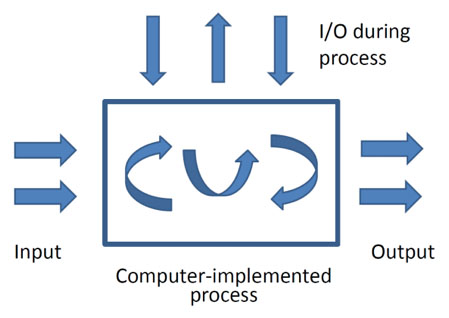The European Patent Office (EPO) published its decision to the highly anticipated G 0001/19 on March 10, 2021. It was the first time the EPO has held a hearing via videoconference and only the second hearing relating to computer-implemented inventions, with more than 1,600 people watching the live feed and many amicus curiae briefs filed. The EPO gave its ruling on three referred questions:
- "In the assessment of inventive step, can the computer-implemented simulation of a technical system or process solve a technical problem by producing a technical effect which goes beyond the simulation's implementation on a computer, if the computer-implemented simulation is claimed as such?"
- "If the answer to the first question is yes, what are the relevant criteria for assessing whether a computer-implemented simulation claimed as such solves a technical problem? In particular, is it a sufficient condition that the simulation is based, at least in part, on technical principles underlying the simulated system or process?"
- "What are the answers to the first and second questions if the computer-implemented simulation is claimed as part of a design process, in particular for verifying a design?"
Background
The three questions were brought to the EBoA by the Board of Appeal (BoA) after an appeal by Bentley Systems (UK) Limited, in relation to a patent for the simulation of the movement of an autonomous entity through an environment (i.e., creating a model of pedestrians moving through a building and using said model in the design of the environment/building). This has obvious uses for cases such as evacuating stadiums and railway stations. The model looked at individual pedestrians under certain parameters, such as walking speeds and step lengths, as well as personal space and obstacles in their way.
The examiner at first instance ruled it was only the use of a computer that contributed to the technical character of the claimed method and was therefore not inventive.
Bentley Systems appealed this decision and argued that, after T 641/00 (Comvik1) and T 1227/05, the method steps still contributed to the overall technical character of the invention, even if the individual method steps were themselves nontechnical. The BoA took the view that the steps forming the method were nontechnical and could only contribute to the technical character of the claim to the extent that their combination interacted with the technical features of the claim to produce a technical effect. As the only technical feature was the computer, the technical effect of the combination was viewed as putting a nontechnical process onto a computer, and therefore was not inventive. However, the board referred the three above questions to the EBoA, which only deals with questions of law, not questions of fact. The EBoA accepted these questions in an effort to minimize inconsistencies across Europe in the way the law is applied to simulations and models. It has long been established that computer programs must achieve some technical benefit beyond lines of code, but how that relates to models and simulations is not clear. The creation of models and simulations is arguably technical (although in isolation would likely be considered a mathematical method or mental act, precluding it from patentability), but the processes being simulated are not technical.
Technical effect of computer-implemented inventions at the EPO
After earlier cases at the BoA, there effectively has been a two-hurdle approach to the patentability of computer-implemented invention. First, it must pass Article 52 EPC - it must not fall under one of the excluded categories, and must be new, involve an inventive step and be industrially applicable. Second, it must pass a hurdle in the inventive-step inspection, where the differences with the closest prior art are determined, and only those that contribute to the technical character are considered for an inventive step. (Nontechnical elements don't contribute to inventive step.) The combination of the second hurdle, as laid out by the Comvik approach, and looking at previous case law (G 3/08), leads us to require a technical effect going beyond the simulation's straightforward or unspecified implementation on a standard computer system to contribute to an inventive step (i.e., a further technical effect).

The above figure shows how and when technical effects or interactions may occur in a computer-implemented process, with the arrows representing interactions that are different from the abstract data input and output or internal data processing or transfer. This shows how technical effects can occur within the computer-implemented process (for example, a faster processing time), as well as at the input and output. A direct link with physical reality is therefore often a good indicator of a further technical effect, but not a necessary condition. (Refer to the EPO's Guidelines for Examination for examples of further technical effects of computer-implemented inventions.)
Decisions on the referred questions
Question 1
In answer to the first referred question, the EBoA decided that a computer-implemented simulation of a technical system or process that is claimed as such can - for the purpose of assessing an inventive step - solve a technical problem by producing a technical effect going beyond the simulation's implementation on a computer. This is a slight deviation from a previous decision at the Board of Appeal (T 1227/05), which says that simulation of a physical system defined by a claim is a technical purpose.
This means that computer-implemented simulations are not excluded from patentability in Europe. As with all other computer-implemented inventions, the key is whether it has a "technical effect" as set out by the Comvik approach. As before, the Comvik approach looks at whether the simulation of the system or process contributes to the solution of a technical problem. Simply calculating the behaviour of a technical system as it exists on the computer, and the numerical output of such calculation, should not be confused with any technical effect of the simulation process. The EBoA goes into detail about the strict limits for the consideration of potential or merely calculated technical effects following the Comvik approach, and states that T 1227/05 should not be taken to be generally applicable criterion, as the findings were based on specific circumstances that do not apply in general.
When the Comvik approach is applied to simulations, the underlying models form boundaries (e.g., walking speeds and step length), which may be technical or nontechnical. In terms of the simulation itself, these boundaries are not technical. However, they may contribute to technicality if, for example, they are a reason for adapting the computer or its functioning, or if they form the basis for a further technical use of the outcomes of the simulation (e.g., a use having an impact on physical reality). To avoid patent protection being granted to nonpatentable subject matter, such further use must be implicitly specified in the claim. The same applies to any adaptations of the computer or its functioning. Thus, it will remain important to keep in mind the technical effects when drafting any application regarding simulations, as with other computer-implemented inventions.
This has a further-reaching impact than on simply computer-implemented simulations, as it is now likely that other subcategories of computer-implemented inventions, such as AI (with uses in drug discovery and medical diagnosis, as well as the more known image and speech processing), will also be subject to the Comvik approach, not any special approach.
Question 2
The EBoA is generally strict in its approach to answering questions and will only answer if it feels it is essential to bring uniformity to the way the law is implemented or that it is necessary to answer the questions to solve the referred case. In this instance, the EBoA decided that the first half of the second question was not admissible.
In answer to the second half of the second question, the EBoA decided it is not a sufficient condition that the simulation is based, in whole or in part, on technical principles underlying the simulated system or process for the assessment of inventive step. Similarly, just because a simulation is based solely on nontechnical principles does not necessarily mean the simulation itself does not provide some technical effect - which theoretically allows, for example, game-theory simulations to be patented, provided there is some further technical effect. The EBoA considers that it is never possible to give an exhaustive list of criteria for assessing whether a computer-implemented process has a technical effect. This means that simulations must be examined on a case-by-case basis as to whether the standard of "technicality" criteria for computer-implemented inventions are met. Simply being based on technical principles is not enough to confer patentability.
Question 3
In response to the third question, the EBoA decided that the answers to the first two questions are no different if the computer-implemented simulation is claimed as part of a design process, particularly for verifying a design. While a design process is normally a cognitive activity, features relating to a design may or may not contribute to the technical character of the invention, and once again the Comvik approach is needed to establish its technicality. No special rules have been made for something claimed as part of a design process and no easy path to technicality has been provided for applicants.
Key takeaways
After this decision by the EBoA, simulations (along with all other computer-implemented inventions) may be patentable if they can be directly linked to an effect that is deemed technical. The EBoA has confirmed the existing approach to technicality of a computer-implemented invention in the Comvik approach and has provided useful confirmation of the considerations that should be made when looking to patent such an invention.
Footnotes
1 More details on the Comvik approach.
The content of this article is intended to provide a general guide to the subject matter. Specialist advice should be sought about your specific circumstances.



